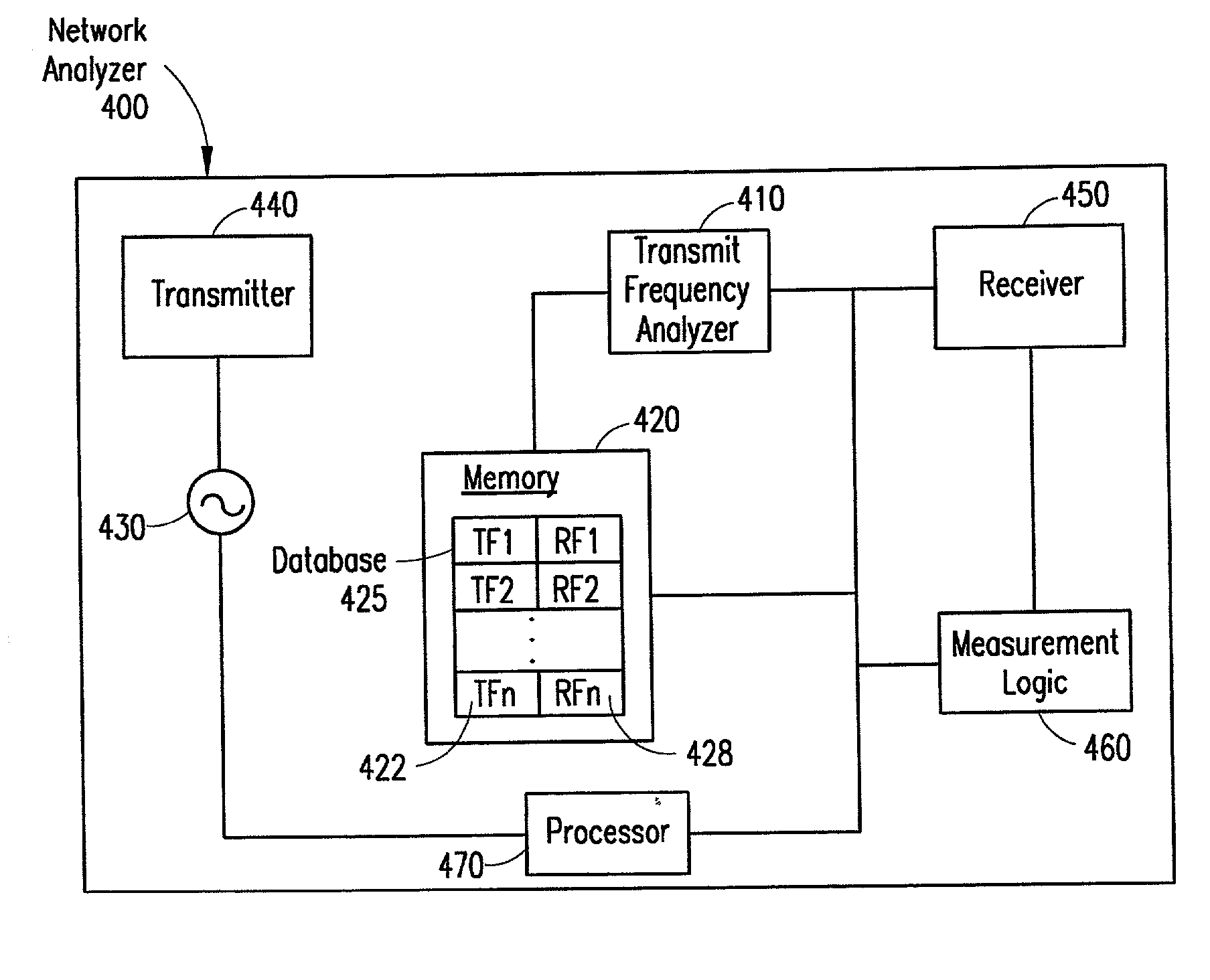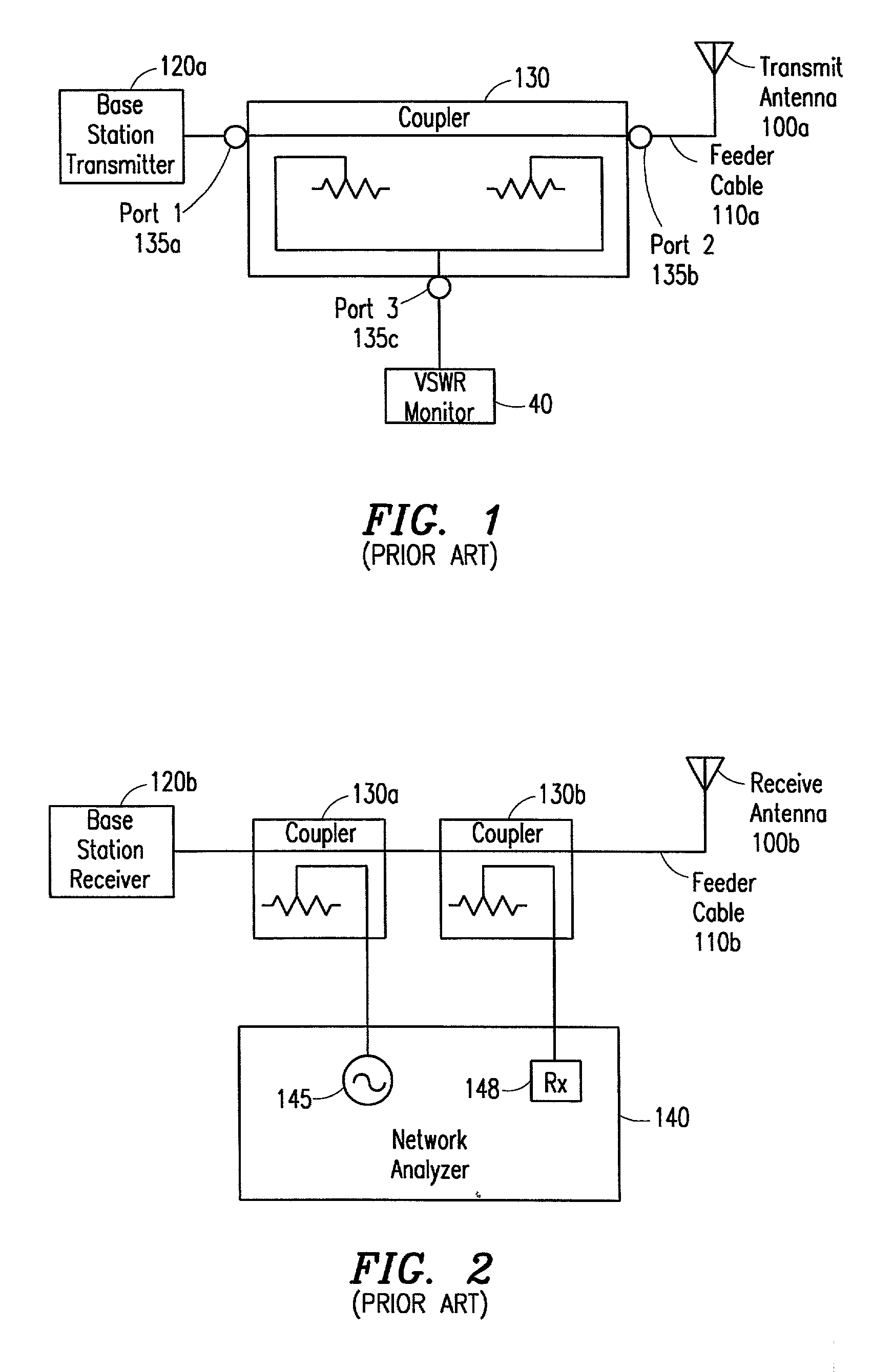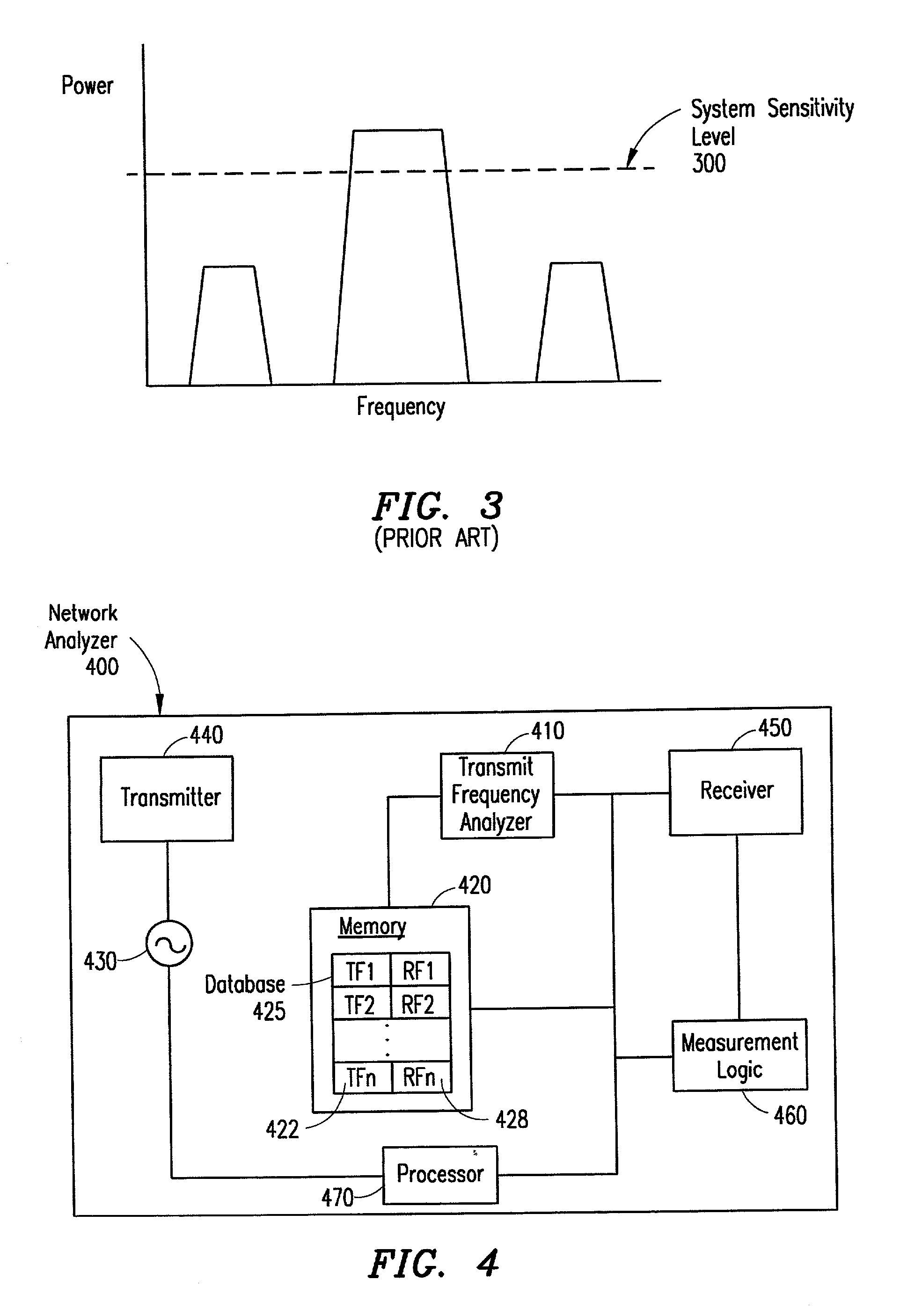Network analyzer for measuring the antenna return loss in a live cellular network
a network analyzer and live cellular network technology, applied in the field of test and measurement systems, can solve the problems of reducing call quality, signal has the potential to disrupt the existing radio link between the base station and the mobile phone of customers, and high level of interference at the input to the base station receiver
- Summary
- Abstract
- Description
- Claims
- Application Information
AI Technical Summary
Problems solved by technology
Method used
Image
Examples
Embodiment Construction
[0023] The numerous innovative teachings of the present application will be described with particular reference to the exemplary embodiments. However, it should be understood that these embodiments provide only a few examples of the many advantageous uses of the innovative teachings herein. In general, statements made in the specification do not necessarily delimit any of the various claimed inventions. Moreover, some statements may apply to some inventive features, but not to others.
[0024] FIG. 1 illustrates a conventional VSWR 40 connected between a base station transmitter 120a and a transmit antenna 100a that uses the base station transmitter 120a as the source stimulus for measuring the antenna return loss on a transmit antenna 100a. The VSWR monitor 40 is shown connected to a coupler 130 that is placed on a feeder cable 110a between the base station transmitter 120a and the transmit antenna 100a. The coupler 130 has three ports 135a-c, in which the first port 135a receives the...
PUM
 Login to View More
Login to View More Abstract
Description
Claims
Application Information
 Login to View More
Login to View More - R&D
- Intellectual Property
- Life Sciences
- Materials
- Tech Scout
- Unparalleled Data Quality
- Higher Quality Content
- 60% Fewer Hallucinations
Browse by: Latest US Patents, China's latest patents, Technical Efficacy Thesaurus, Application Domain, Technology Topic, Popular Technical Reports.
© 2025 PatSnap. All rights reserved.Legal|Privacy policy|Modern Slavery Act Transparency Statement|Sitemap|About US| Contact US: help@patsnap.com



